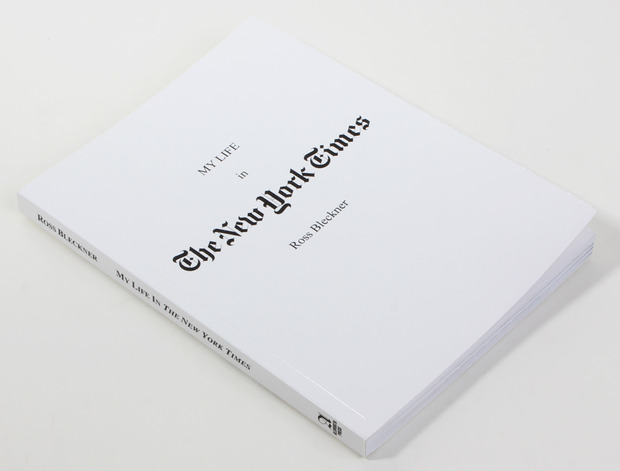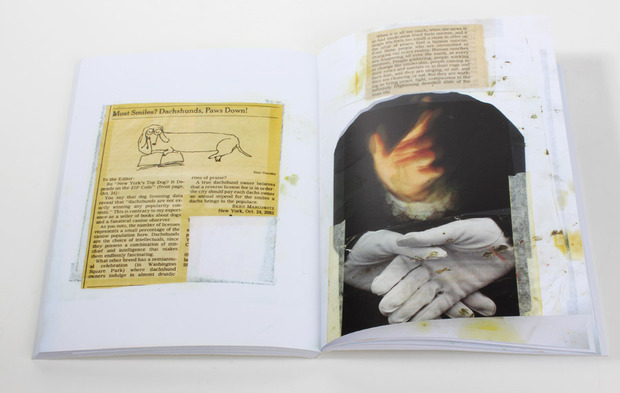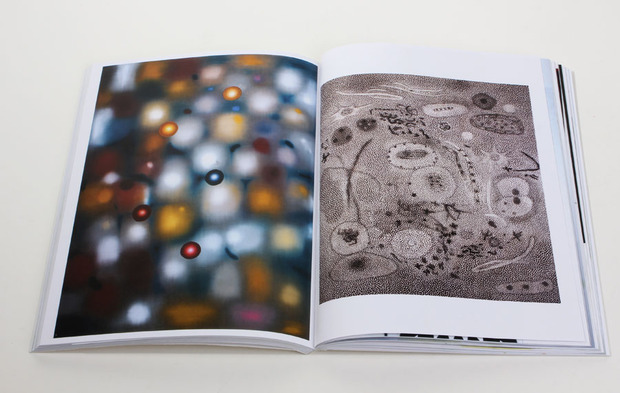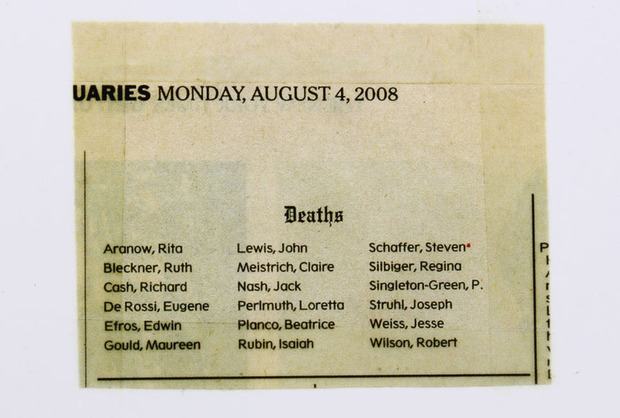My Life in The New York Times
Artist Ross Bleckner on the sum of his clippings


As a New York institution and masterful painter, Ross Bleckner is a true artist. His time—much of it, anyway—is spent cut off, alone and hard at work in his studio in Sagaponack, NY. But he has always voraciously read the newspaper to stay in touch, keeping clippings of inspiration in the form of text and images. Over the years his scrapbooks have informed his artistic process, representing a critical step that never sees the canvas. It is from these notebooks that Bleckner pulled together tidbits to create the book “My Life in The New York Times.”
“Really, the way we live is all about how we make our art, which is a political act.”
As Bleckner is quick to correct, the clippings are not from articles about him—that selection wouldn’t fill a page, let alone a whole book, he insists. Instead, they are the things that interest him. Recent events, global issues and obituaries combine to form a snapshot of the artist’s obsessions.
Fascinated by this look into Bleckner’s process, we were lucky enough to get the chance to speak with the artist to learn more.

So what sort of book is this?
Well, it’s my way of making and commenting on self-help. It’s really like a self-help book—little quotations that I look at that point to ideas that scare me or fascinate me or things that I want to explore more, either in my own writing or art or in what other people have written.

Why, then, The New York Times? What’s your relationship to this paper in particular?
It’s just such a tremendous source of information. I’ve given up a lot of print media and a lot of things I don’t read because I’m not interested in them anymore. And I guess I was never able to give up The New York Times in print. I also read it online, but there’s just something about how this kind of media might be eventually passing. So many of the quotes in the book have to do with commemoration, and I think that the book is in itself a kind of commemoration of newsprint and media of that sort. After a while, you won’t be cutting out little scraps of newsprint to remind yourself of things. In a way, it is for me the passing of an age.


The book also acts as a window to the world. You get a fairly complete picture from looking at these little scraps of paper.
“When I leave my studio, I’m interested in nonfiction. I’ve dealt with my own fiction for so many hours that I want to know a little nonfiction.”
That’s what I thought was so interesting. You can essentially create your own poetry even out of something supposedly as objective as a newspaper. In a way, you can “subjectify” anything just by pulling out the things that you want to remember. And a “journalistic” vehicle can lead to a kind of metaphoric journey. Everybody reads the news differently and remembers different things. So I think that’s an important aspect of it. The things I want to remember and the newspaper that reports it is so different than what a person in politics, statistics or business might remember. I think that is very interesting, the subjectivity of memory.

Do you see a correlation there between the way we read the news and the way you create art?
I do. The inter-relationship of things is what it’s about—whether you’re a political artist or an abstract artist. People like to make distinctions, but in fact they all really evolve and merge with each other. I think if you go back and you look at history and art, the most interesting things have to do with the interconnection between how people think and how people live and the news and the things that make that work relevant at that time.
Even if I don’t hold a banner calling myself a political artist, a lot of my life and my decisions are determined by our collective history and politics. Really, the way we live is all about how we make our art, which is a political act.

Which section to you turn to first when you pick up the paper?
The news—the international news. For artists who spend a lot of time alone living with themselves, there’s a lot of solitary contemplation involved and a lot of working with their own ideas. So when I leave my studio, I’m interested in nonfiction. I’ve dealt with my own fiction for so many hours that I want to know a little nonfiction. I’ve always been fascinated with the juncture between personal subjectivity and international relations. To me, international relations is really just how the world works, how it doesn’t work and what it is we try to accomplish when we actually say, “I would like to make the world a better place.”

I’ve always read the paper first thing in the morning, and a lot of times I’ll cut out things that scare me. The reason I do that and the reason I like looking at obituaries is because there’s something inherently scary about that as well. I like to see it as uplifting because everyone’s a nice guy—everyone’s great and generous and important. But also it reminds me that time is so short. Why am I sitting here reading the paper? I better close the paper and go back to work right now.
In the end, that’s how the paper functions for me. It’s a reminder to look at the news, but get on with your life. Quickly! I guess that’s why I like reading obituaries.
“My Life in The New York Times” can be found at Allworth and on Amazon.
Images of the book by James Thorne












